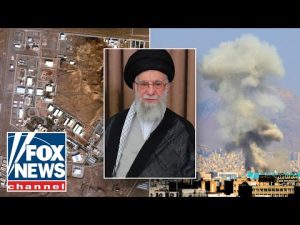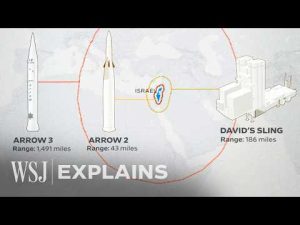In a dramatic turn of events, Israel has taken significant steps against Iran’s media and financial infrastructures, underscoring the delicate power dynamics in the region. Reports reveal that Israel has not only threatened to take down state media but has done so, wielding colorful tactics that have captured global attention. The swift actions taken by Israel may represent a burgeoning strategy to undermine Iranian influence both domestically and abroad, and the implications of these actions cannot be overstated.
To comprehend the magnitude of this situation, one must consider Israel’s position of air superiority over Iran. This dominance allows Israel to operate virtually unchecked in the skies, presenting a formidable challenge to Iran’s defenses. It leaves the Iranian government grappling with not only internal dissent but also external threats that jeopardize their grip on power. While the lightning-fast responses from Israel might seem aggressive, they are a clear signal that Israel will not sit idly by as Iran continues its destabilizing behavior in the region.
Simultaneously, an activist group known as Predatory Sparrow has emerged as an unlikely ally. This group recently targeted Bank SEPA, one of Iran’s oldest financial institutions with deep ties to Iran’s Revolutionary Guard Corps (IRGC). The bank’s function within Iran’s economy is crucial, serving as a financial lifeline underpinned by years of severe U.S. sanctions, including those imposed by the Trump administration in 2019. By crippling a major bank, the actions of Predatory Sparrow have compounded the difficulties facing the Iranian regime, highlighting the effectiveness of targeted actions in the asymmetrical warfare landscape.
The consequences of these recent developments extend beyond mere financial loss. With reports of several Bank SEPA branches closing and customers unable to access their accounts, it appears the Iranian banking system is on the brink of significant collapse. This financial destabilization could set off a chain reaction affecting ordinary Iranians, who may find themselves increasingly severed from their economic realities. In a country where freedoms are limited and dissent is often met with oppression, these actions serve as a quiet rebellion, empowering the populace facing an increasingly desperate regime.
As more cracks appear in Iran’s military, propaganda, and financial infrastructures, one must ponder what the future holds for a country already fraught with internal strife and international scrutiny. Citizens are starting to lose faith in a government that seems unable to provide the stability and resources they desperately need. In a hypothetical scenario, continued disruptions to Iranian systems could pave the way for a new wave of reformers rising from the ashes, challenging the status quo.
Looking ahead, the trajectory of this situation is uncertain, but one thing is clear: the political chessboard in the Middle East is becoming increasingly complex. The conservative view here supports the notion that targeted actions against state-sponsored adversaries can serve as powerful tools in reestablishing a balance of power in the region. As the dust settles on these developments, the world will undoubtedly be watching closely to see how Iran responds, and whether this bold strategy by Israel could usher in a new chapter in Middle Eastern geopolitics.







